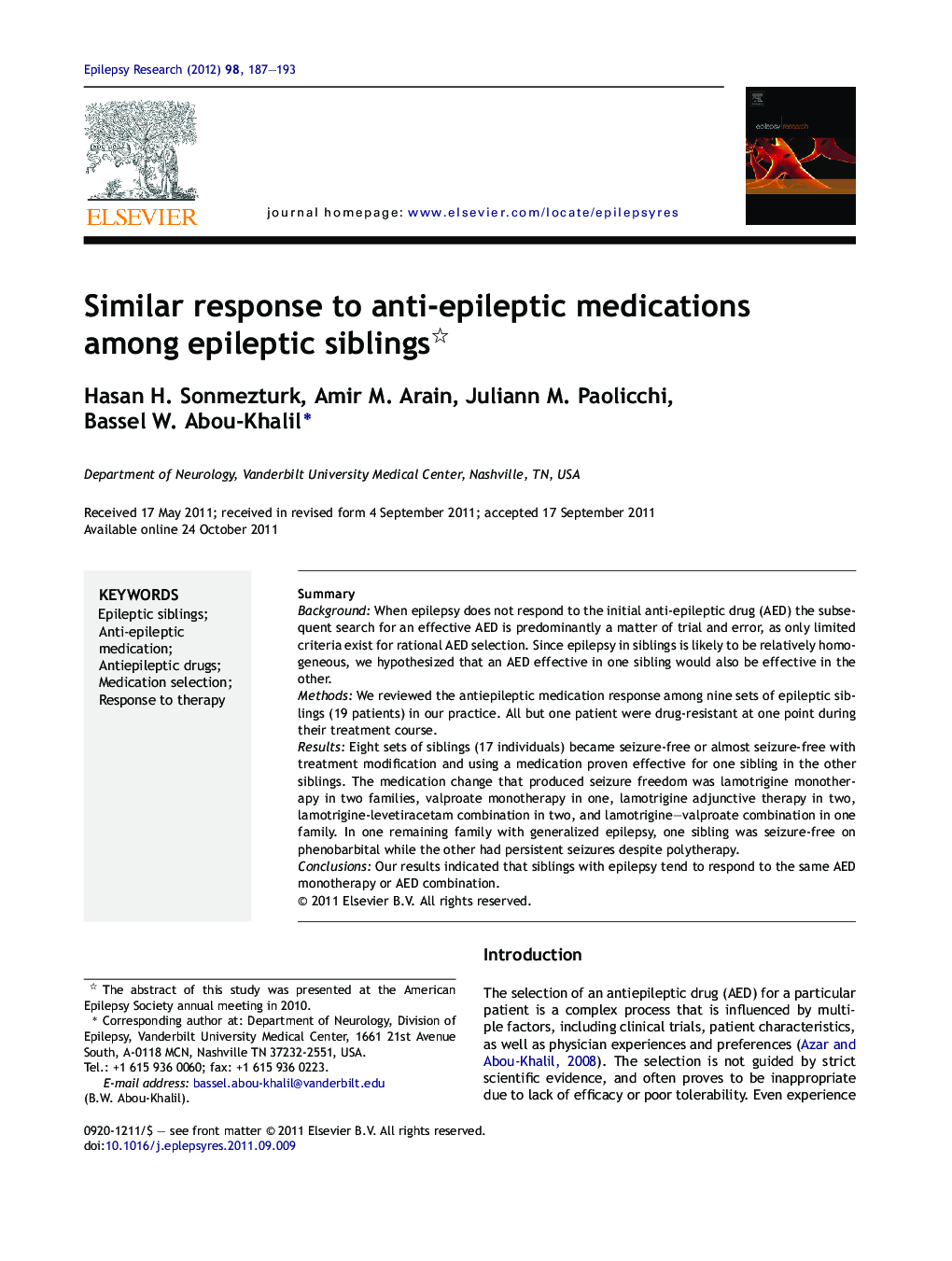| کد مقاله | کد نشریه | سال انتشار | مقاله انگلیسی | نسخه تمام متن |
|---|---|---|---|---|
| 6016098 | 1579925 | 2012 | 7 صفحه PDF | دانلود رایگان |

SummaryBackgroundWhen epilepsy does not respond to the initial anti-epileptic drug (AED) the subsequent search for an effective AED is predominantly a matter of trial and error, as only limited criteria exist for rational AED selection. Since epilepsy in siblings is likely to be relatively homogeneous, we hypothesized that an AED effective in one sibling would also be effective in the other.MethodsWe reviewed the antiepileptic medication response among nine sets of epileptic siblings (19 patients) in our practice. All but one patient were drug-resistant at one point during their treatment course.ResultsEight sets of siblings (17 individuals) became seizure-free or almost seizure-free with treatment modification and using a medication proven effective for one sibling in the other siblings. The medication change that produced seizure freedom was lamotrigine monotherapy in two families, valproate monotherapy in one, lamotrigine adjunctive therapy in two, lamotrigine-levetiracetam combination in two, and lamotrigine-valproate combination in one family. In one remaining family with generalized epilepsy, one sibling was seizure-free on phenobarbital while the other had persistent seizures despite polytherapy.ConclusionsOur results indicated that siblings with epilepsy tend to respond to the same AED monotherapy or AED combination.
Journal: Epilepsy Research - Volume 98, Issues 2â3, February 2012, Pages 187-193